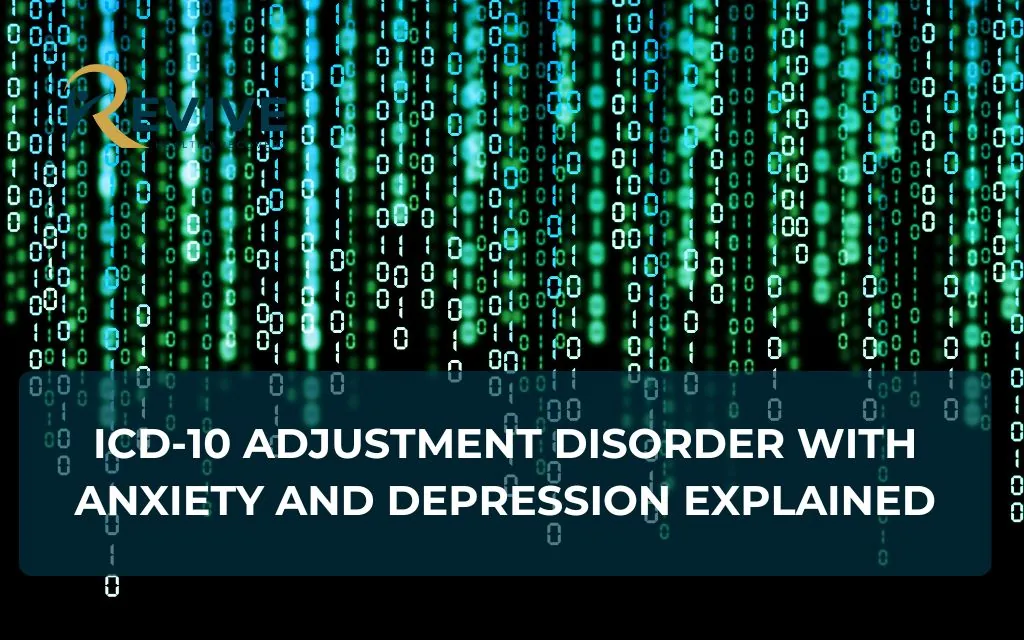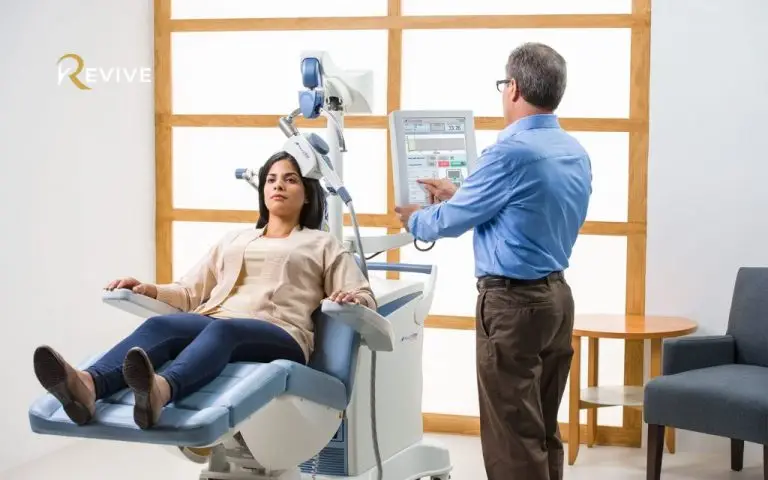Struggling with anxiety after a big life change? ICD-10 code F43.22 might be the key to your diagnosis and treatment. This code plays a crucial role in how healthcare providers document and address adjustment disorder with anxiety, a condition that affects many individuals following significant life stressors.
This guide explores Calm Living Techniques with the meaning behind icd 10 adjustment disorder with anxiety code, how mental health professionals apply it, and what it means for your treatment journey of Calm Living Techniques. Understanding F43.22 provides insight into how the healthcare system categorizes and addresses your specific symptoms.
What Is ICD-10 and Its Role in Mental Health?
Overview of ICD-10
The International Classification of Diseases, 10th Revision (ICD-10) serves as the global standard for classifying and coding diseases, maintained by the World Health Organization (WHO). Healthcare systems worldwide use this standardized system to document diagnoses consistently.
ICD-10 functions as a universal language for healthcare providers, researchers, and insurance companies. It transforms complex medical conditions into alphanumeric codes that communicate specific diagnoses across different healthcare settings and systems.
Focus on Mental Health Coding
Within the ICD-10 framework, mental health conditions receive particular attention under the “F” category. Adjustment disorders, including adjustment disorder with anxiety (F43.22), fall within this classification system.
The precise coding allows clinicians to document the exact nature of a patient’s condition. For those experiencing anxiety symptoms following a stressful life event, F43.22 provides the specific designation that guides appropriate treatment and ensures proper insurance coverage.

Understanding Adjustment Disorder with Anxiety
What Is Adjustment Disorder?
Adjustment disorder represents a psychological response to an identifiable stressor that exceeds typical coping mechanisms. Unlike chronic anxiety disorders, adjustment disorder with anxiety develops within three months after a specific stressful event such as:
- Job loss or career change
- Relationship difficulties or divorce
- Moving to a new location
- Serious illness diagnosis
- Death of a loved one
This condition differs from generalized anxiety disorder or other chronic conditions in its direct connection to a specific stressor and its typically time-limited nature. The adjustment disorder icd 10 classification recognizes this distinction, highlighting both the triggering event and resulting symptoms.
The Anxiety Component
When adjustment disorder manifests primarily with anxiety symptoms, clinicians use the designation adjustment disorder with anxiety icd 10 code F43.22. Common symptoms include:
- Persistent nervousness or worry
- Difficulty concentrating
- Restlessness or feeling on edge
- Sleep disturbances
- Physical symptoms like increased heart rate or muscle tension
These symptoms cause significant distress and impact daily functioning but remain tied specifically to the identified stressor. This distinguishes adjustment disorder with anxiety from generalized anxiety disorder, which often lacks a clear triggering event.
ICD-10 Code F43.22: Breaking It Down
Code Structure and Meaning
Understanding the structure of ICD-10 code F43.22 helps clarify its clinical significance:
- “F” designates mental and behavioral disorders
- “43” indicates reaction to severe stress and adjustment disorders
- “.22” specifies adjustment disorder with anxiety
This precise classification helps clinicians document that a patient’s anxiety symptoms stem directly from an adjustment reaction rather than representing a different anxiety disorder. The icd 10 adjustment disorder with anxiety and depression coding differs slightly (F43.23), further demonstrating the system’s specificity.
Importance of F43.22
The specific F43.22 code serves several critical purposes:
- Ensures accurate diagnosis by distinguishing adjustment-related anxiety from other forms of anxiety
- Guides appropriate treatment planning focused on the stressor and resulting symptoms
- Facilitates insurance reimbursement by clearly documenting the nature of the condition
- Enables healthcare systems to track prevalence and outcomes
For patients, this specificity means receiving treatment tailored to their condition rather than more general anxiety interventions. The icd 10 adjustment disorder with anxiety code bridges the gap between clinical understanding and practical treatment approaches.

How F43.22 Operates in Healthcare
Diagnosis with F43.22
Mental health professionals follow specific criteria when assigning the adjustment disorder with the icd 10 adjustment disorder with anxiety code:
- Identification of a clear stressor preceding symptom onset
- Assessment of anxiety symptoms that exceed what’s expected for the stressor
- Confirmation that symptoms began within three months of the stressor
- Verification that symptoms cause significant distress or functional impairment
- Determination that symptoms don’t meet criteria for another mental disorder
This diagnostic process aligns with DSM-5 criteria (the American Psychiatric Association’s diagnostic manual), ensuring consistency across different classification systems. Understanding both the icd 10 depression with anxiety classification and adjustment disorder criteria helps clinicians make accurate differential diagnoses.
Practical Use in Documentation and Billing
In healthcare settings, the F43.22 code appears in:
- Electronic health records
- Treatment plans
- Insurance claims
- Referrals to specialists
- Research and statistical reporting
For insurance purposes, this specific code justifies the medical necessity of treatment interventions. Without the proper code, patients might face challenges obtaining coverage for therapy, medication, or other services related to their condition. The icd-10 code for anxiety and depression (F43.23) follows similar documentation procedures but addresses a different symptom presentation.
Treatment Implications
The icd 10 adjustment disorder with anxiety code (F43.22) diagnosis typically leads to specific treatment recommendations:
- Cognitive-behavioral therapy focusing on stress management and anxiety reduction
- Brief psychotherapy addressing the connection between the stressor and symptoms
- Supportive counseling to enhance coping skills
- Short-term medication in some cases to manage acute anxiety symptoms
At Revive Health Recovery in Denver, Colorado, our treatment approach for adjustment disorder with anxiety incorporates evidence-based interventions tailored to each individual’s specific stressor and symptom pattern.
Variations of Adjustment Disorder Codes
Exploring Related ICD-10 Codes
While F43.22 specifically addresses adjustment disorder with anxiety, related codes capture different manifestations:
- F43.20: Adjustment disorder, unspecified
- F43.21: Adjustment disorder with depressed mood
- F43.23: Adjustment disorder with mixed anxiety and depressed mood (icd 10 adjustment disorder with anxiety and depression)
- F43.24: Adjustment disorder with disturbance of conduct
- F43.25: Adjustment disorder with mixed disturbance of emotions and conduct
The icd-10 depression with anxiety code (F43.23) applies when both symptoms appear equally prominent, while F43.22 indicates that anxiety symptoms predominate.
Choosing F43.22 vs. Other Codes
Clinical judgment determines which code best represents a patient’s condition:
- F43.22 applies when anxiety symptoms clearly dominate the clinical picture
- F43.23 (anxiety and depression icd 10) applies when both anxiety and depression appear equally
- F43.21 applies when depressive symptoms predominate (adjustment disorder with depressed mood icd 10)
This specificity ensures that treatment addresses the primary symptom pattern. For instance, someone with an F43.22 diagnosis might benefit more from anxiety-focused interventions than from depression-oriented approaches.

Real-Life Examples of F43.22 in Action
Scenario 1: Post-Stressor Anxiety
Sarah, a 32-year-old marketing executive, experienced increasing anxiety after relocating to Denver for a promotion. Despite the positive career move, she developed persistent worry about her performance, difficulty sleeping, and constant nervousness in social situations with new colleagues.
Her therapist identified the move as the clear stressor and noted that anxiety symptoms predominated. The diagnosis of icd 10 adjustment disorder with anxiety code (F43.22) guided treatment toward cognitive-behavioral therapy focused on adaptation to new environments and anxiety management techniques.
Scenario 2: Differentiating Codes
Michael, a 45-year-old teacher, sought help after losing his job. He initially presented with significant anxiety about financial security and future employment. As treatment progressed, his provider noticed equal measures of depressive symptoms including low mood, loss of interest, and feelings of worthlessness.
Though initially considered for the icd 10 adjustment disorder with anxiety code (F43.22), his provider updated the diagnosis to adjustment disorder with mixed anxiety and depressed mood (F43.23) to reflect the complete symptom picture, adjusting treatment to address both anxiety and depression.

Frequently Asked Questions
What is ICD-10 code F43.22 used for?
F43.22 specifically identifies adjustment disorder with anxiety, a condition where anxiety symptoms develop in response to an identifiable stressor. At Revive Health Recovery, we use this code to document cases where anxiety is the primary response to a significant life change.
How does F43.22 differ from other adjustment disorder codes?
While all adjustment disorder codes (F43.2x) indicate reactions to stressors, F43.22 specifically highlights anxiety as the predominant symptom. Other codes indicate depression (F43.21), mixed symptoms (F43.23), or behavioral disturbances (F43.24). Revive Health Recovery ensures accurate differential diagnosis to guide proper treatment.
What symptoms trigger the use of F43.22?
Excessive worry, nervousness, restlessness, trouble concentrating, and physical tension symptoms that develop after a stressor warrant the F43.22 code. Our clinical team at Revive Health Recovery expertly identifies these patterns to determine the most appropriate diagnosis.
Can F43.22 apply to long-term anxiety?
Generally, adjustment disorder is considered temporary, with symptoms resolving within 6 months after the stressor ends. Persistent symptoms beyond this timeframe may indicate a different condition. Revive Health Recovery provides the most comprehensive assessment services in Denver to ensure accurate diagnosis.
How does F43.22 affect insurance coverage?
The F43.22 code helps justify the medical necessity of treatment to insurance providers. At Revive Health Recovery, our administrative team works diligently to ensure proper coding for maximum coverage eligibility for our clients seeking treatment in Colorado.
Conclusion
The ICD-10 code F43.22 represents more than just a diagnostic label – it serves as a gateway to appropriate treatment for those experiencing anxiety following significant life changes. Understanding icd 10 adjustment disorder with anxiety code helps demystify the diagnostic process and highlights the temporary, stressor-linked nature of adjustment disorder with anxiety.
If you’re experiencing persistent anxiety after a major life event, consider discussing your symptoms with a mental health professional who can determine whether the adjustment disorder with anxiety icd-10 code applies to your situation. Proper diagnosis leads to targeted interventions that address both the stressor and resulting symptoms.
At Revive Health Recovery in Denver, Colorado, our team specializes in treating adjustment disorders and other mental health conditions. We provide comprehensive assessment, diagnosis, and evidence-based treatment to help you navigate life’s challenges and restore emotional balance.
For more information about adjustment disorder with anxiety or to explore treatment options, contact Revive Health Recovery today at 1427 S Federal Blvd, Denver, CO 80219, call us at (303) 268-4655, or email contact@revivehealthrecovery.com. Our Denver expertise in adjustment disorder icd-10 diagnosis and treatment ensures you receive the most appropriate care for your specific needs.



